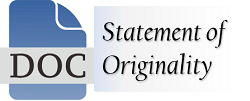Upaya Penurunan Produk Cacat Pada Proses Painting Unit CN113R Dengan Metode Failure Mode Effect Analysis (FMEA)
DOI:
https://doi.org/10.31599/ft8m7g72Keywords:
Failure Mode Effect Analysis, Defect, Cost Of Poor QualityAbstract
PT.SGMW Motor Indonesia is a company which is engaged in the automotive field, especially in cars assembly with Wuling as its brand in Indonesia and the product called CN113R. In an effort to maintain product quality, PT.SGMW seeks to minimize the number of defects in each inspection unit. In order to attract large Indonesian market, the company needs to improve the quality of the product which are produced. From data collection conducted at PT. SGMW at Type Approval phase (TA) from February to March 2017, it was found that Sanding Mark defect is the biggest defect type that happened in PT.SGMW that is equal to 24% and this happened at painting process. Then in the next stage, after brainstorming process with related parties in the Paintshop Department to find out the main cause of Sanding Mark defect which is then shown through a fishbone diagram. To find out the improvement priority or follow-up to the causes described in fishbone diagram, I use 5W + 2 H method. In the next step, an improvement analysis is done using Failure Mode Effect Analysis (FMEA) method. after that, by the RPN result which is obtained, the most potential failure mode as the cause of the defect that must be handled immediately. From the observation results obtained the highest defect value is sanding mark. One of the causes of the highest Risk Priority Number (RPN) value in the Elpo sand section is because of the used of the orbital sender is tilted and angled. After the improvement, it can decrease the defect from 449 findings down to 297 findings, and lower repair cost from Rp. 142,863,718 to Rp 94,500,054.









_-_Copy1.jpg)


